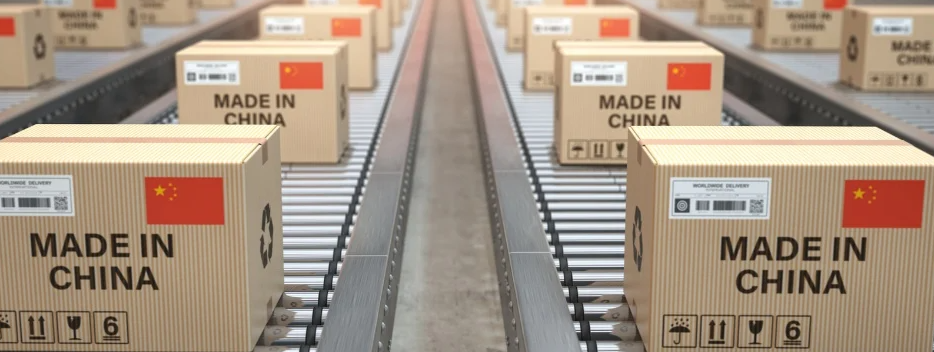After the West, it is now Southeast Asian nations’ turn to impose hefty duties on cheap Chinese goods dumped in their markets, the first since the two sides signed the Framework Agreement on Comprehensive Economic Cooperation in November 2002.
While giving a severe jolt to Beijing, Indonesia has planned to impose a 200% tariff on imported fabrics from China, it is also considering slapping new duties on imports of cheap ceramics, clothing, shoes, cosmetics, and electronics from the East Asian nation.
Indonesia’s labour-intensive sectors have suffered massively due to dumping of China-made products.
For instance, the textile sector which employs around 3.9 million people in Indonesia has been almost ruined on account of dumping of cheap and heavily subsidised Chinese clothes.
Since 2019, 36 textile factories in the Southeast Asian country have shut down their operations, while 31 others have undertaken massive lay-offs, South China Morning Post quoted Indonesia’s Nusantara Trade Union Confederation as saying.
From roughly $80 billion during 2020-21, Southeast Asian nations’ trade deficit with China has today ballooned to around $115 billion, Nikkie Asia said.
This year, around 49,000 workers in the textile, garment and footwear sectors have been laid off in Indonesia as factories have pulled down the shutters in provinces of West Java, Central Java and Banten, Nikkei Asia said.
Sritex, one of the Southeast Asian nation’s biggest textile and garment producers, recorded a revenue of $325 million in 2023, a 38% decline from $524.6 million in revenue earned in 2022.
This year, between January and May, Sritex laid-off 3,000 workers, or 23% of its total workforce, South China Morning Post said.
Malaysia, which has a close trade relation with China, with total trade between the two countries last year reaching 450.84 billion ringgit ($98.90 billion), imposed a 10% tariff on imported goods bought online from China under 500 ringgit ($108) in January 2024.
To protect small-and medium-sized enterprises from unfair trade practices of China, Malaysia’s Trade Ministry plans to present anti-dumping legislation to the parliament next year, considering cheap Chinese products that hurt local businesses.
Between 2015 and 2023, Malaysia’s Trade Ministry undertook nine anti-dumping measures against Chinese exports to protect the local businesses, Bloomberg said.
Even as these South Asian countries, which are part of the ASEAN, are doing what they can do to provide relief to their domestic retaliators and manufacturers from flooding of discounted Chinese products in their markets, Thailand is worried about widening trade deficit with China.
A glut of cheap Chinese goods—from apparel to electronic devices to vegetables and steel and aluminium in Thailand has seen Bangkok’s trade deficit with Beijing rise to a record $36.6 billion in 2023, up from $29.2 billion in 2021, said the Thai Ministry of Commerce.
In July this year, Thailand decided to slap a 7% tariff on import of Chinese goods valued at less than 1,500 baht ($42). Yet what worries Thai businessmen the most is Chinese entrepreneurs’ ability to flood their cheap products in the Southeast Asian country’s market.
Armed with technology and the best mode of production systems, Chinese entrepreneurs engage in mass-scale manufacturing of apparel, footwear, cosmetic products, electronic goods, and other goods and transport them to emerging markets of Southeast Asia and the world.
E-commerce platforms like Alibaba-backed Lazada and ByteDance’s TikTok have also worked well with Chinese exporters’ strategy to lure Southeast Asian customers towards their cheap goods.
But this has led to local manufacturers in Thailand reducing production by 50%, Bangkok Post quoted the Federation of Thai Industries (FTI) as saying.
According to the FTI, up to 20 sectors, including steel, aluminium, plastics, ceramics, petrochemicals, and medicine, are struggling to cope up with tougher competition from cheap Chinese imports in the country, with small and medium-sized enterprises (SMEs) the most negatively affected.
Between January and May this year, 500 factories faced shut down in Thailand, resulting in 15,342 people losing their jobs, said the Thai Department of Industrial Works.
In 2023, more than 1,300 factories pulled the shutter down on their activities in Thailand; such closers of factories were 60% more than previous year.
China watchers say Beijing started flooding emerging markets in Southeast Asia, Africa, and South America with cheap and substandard goods under its plan to push forward its Global South strategy.
Beijing launched this move after it faced trade barriers in the US, the East Asian country’s largest trade partner in the world.
In a recent move to steamroll China’s avoidable dumping of cheap goods in the American market, the Joe Biden administration has imposed hefty tariffs on steel and aluminium products, semiconductors, electric vehicles, batteries, solar cells, ship-to-shore cranes, and medical products.
While the US has hiked tariff on China manufactured steel and aluminium products from 7.5% to 25%, a decision has been taken by the Biden administration to increase the levy on made-in-China semiconductors from 25% to 50% by 2025.
The tariff on China-made electric vehicles has been hiked from 25% to 100%. Similarly, duty has been increased on Chinese lithium-ion EV batteries from 7.5% to 25%.
At the same time, certain critical minerals supplied from China have also seen the imposition of massive hikes in duties.
For instance, the tariff rate on natural graphite and permanent magnets will increase from zero to 25% in 2026.
But duties on critical minerals have been raised from zero to 25% this year. In all, the newly imposed US tariffs against Chinese imports stand at $18 billion.
These tariffs build upon sweeping $300 billion duties levied by the US against Chinese goods between 2018 and 2019, said CNN.
In the face of stiff trade barriers from the US, China has found Southeast Asian countries easy dumping grounds for its discounted products.
However, even as Chinese overcapacity has been a cause of huge concern among Southeast Asian nations for years, it has never been as closely scrutinized as it is done in the region now.
From roughly $80 billion during 2020-21, Southeast Asian nations’ trade deficit with China has today ballooned to around $115 billion, Nikkie Asia said.
Analysts cite low demand of goods in China which is in the grip of economic slowdown, as another major reason why Beijing is pushing its substandard products in the world market.
But Vietnam, another Southeast Asian nation which, like China, also follows Communist ideology does not buy this argument.
In June, the country’s Ministry of Industry and Trade (MoIT) called for an investigation and application of anti-dumping measures against steel products from China.
Last year, the MoIT of Vietnam slapped anti-dumping duties on China supplied wind energy towers following a complaint by domestic producers that flooding of Chinese wind energy towers caused huge damage to local entrepreneurs.
However, even as Chinese overcapacity has been a cause of huge concern among Southeast Asian nations for years, it has never been as closely scrutinized as it is done in the region now.
This means China, in coming weeks and years, is about to face tough barriers for its goods in Southeast Asia which has so far quietly followed Beijing on all matters, including trade and commerce.









Comment